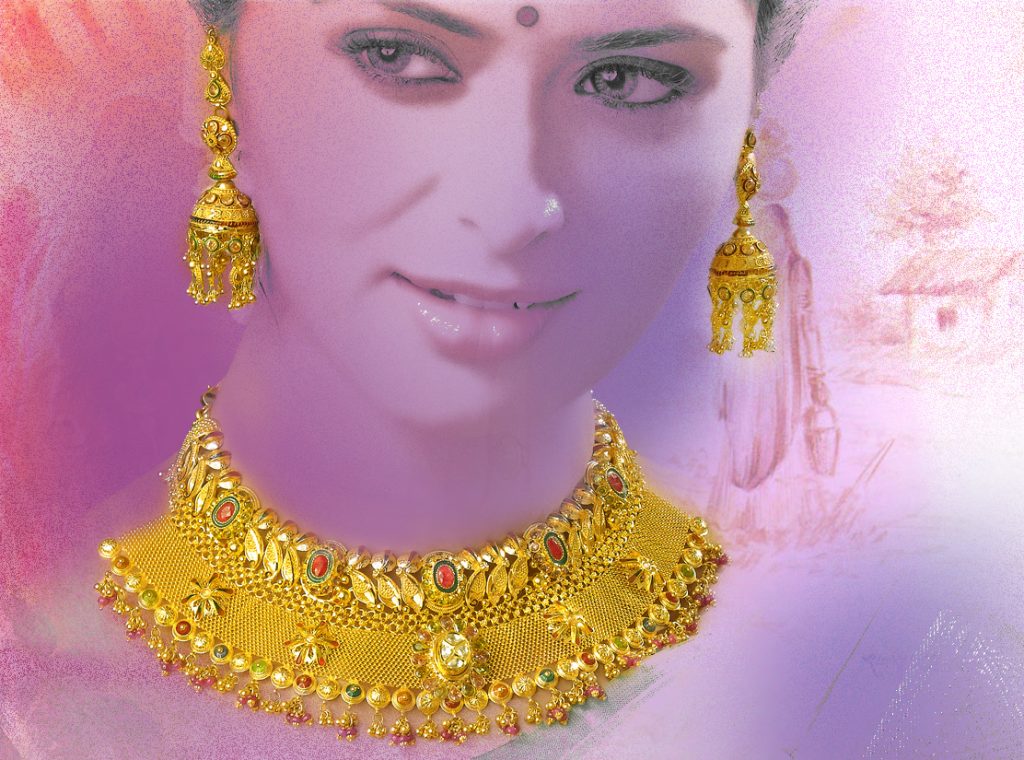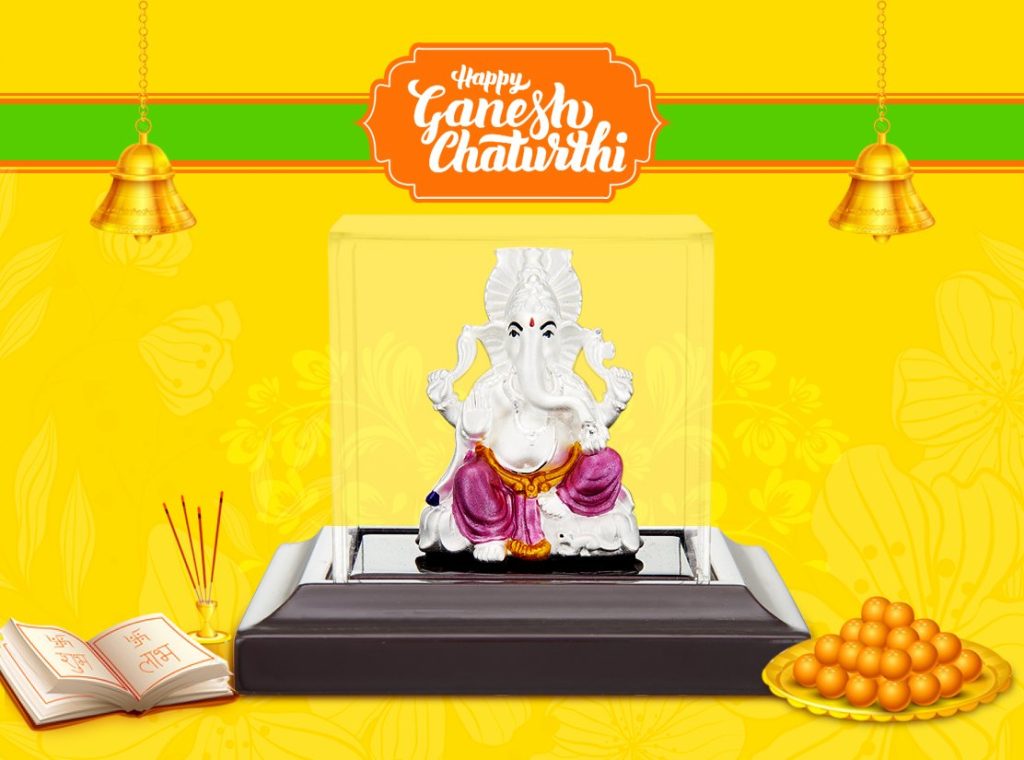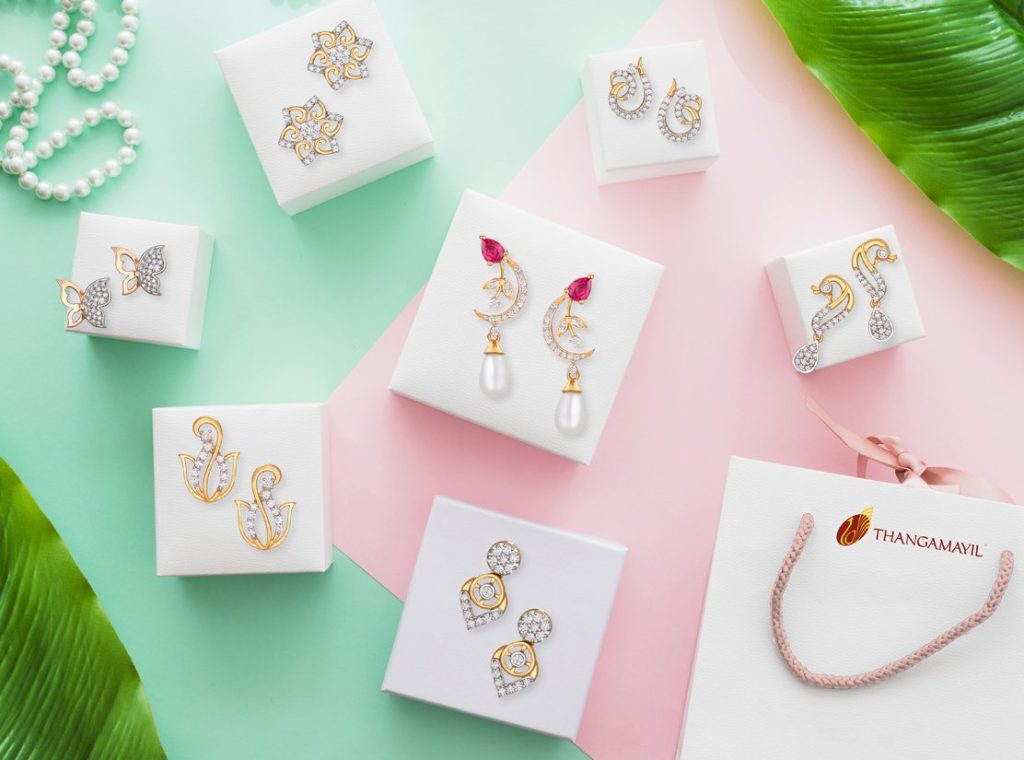A Glimpse Into The Rajasthani Bride’s Jewellery Box!
Say the word ‘Rajasthan’ and the mind immediately conjures up images of endless desserts and sand dunes, magnificent palaces and forts, and a vivid culture. The land of kings, Rajasthan has been the seat of royalty in India for many, many years. From the brave Rajputs, the noble Moghuls and the enterprising Marathas – Rajasthan (or Rajputana) has been coloured by the distinct history and traditions that each of these kingdoms brought to its sands.
Nothing bears testimony to this rich heritage more than the arts and crafts of Rajasthan. From the intricate carvings on palace walls to the ornate jewellery a Rajasthani bride wears – opulence and grandeur are the cornerstones of Rajasthani artisanry. Just one look at a Rajasthani (Marwari or Rajputi) bride on her wedding day – and you will know you are witnessing royalty!
Jewellery making in Rajasthan flourished under the patronage of the Mughal rulers, and Rajasthani craftsmen developed specific techniques that are unique to this state alone. The techniques of kundan and thewa that originated here; the development of jadau jewellery that came Mughals, the discovery and use of polki or uncut diamonds, and the refined Rajasthani meenakari work have today become popular and coveted around the world.
The Rajasthani bride’s jewellery box comprises of opulent, heavy jewellery, crafted entirely in gold using these techniques. Kundan and jadau work are all-time bridal classics, while many modern brides are also opting for more contemporary diamond and gemstone jewellery.
The Bride’s Neck and Decolletage :
Made from uncut diamonds embedded in pure gold, kundan jewellery is the most prominent on a bride in the form of her earrings, called Kundan Butti and her necklace – the Raani Haar. Similar to jhumkas, the kundan bhutti are large and long, sometimes touching the neck of the bride. The raani haar is an equally ornate and heavy necklace, covering most of the bride’s décolletage.
Along with the raani haar, a Rajputi bride may also wear an Aad or a Timaniya in a choker style around her neck. Both are crafted in pure gold and gemstones. The aad has a distinct stiff rectangular shaped ‘pendant’ and is suspended by multiple pearl chains. The Timaniya is more delicate, and somewhat resembles the contemporary ‘bib’ necklaces of today. Some brides may also add a Thewa style pendant. A very delicate and highly specialized type of craftsmanship is required to make Thewa jewellery. It entails embossing a very thin sheet of gold bearing very intricate work on a sheet of coloured, molten glass. The thewa pendant is usually set in pearl chains.
The Bride’s Crown :
Culturally, the Rakhdi (maangtika) has the most significance for the bride. It is worn like the maangtika on the forehead, between the parting of the hair, but has a bell shape that is unique only to the Rajasthani bride. It greatly enhances the appearance of the bride’s face, giving it a gentle youthful innocence. The Rakhdi is often accompanied by the Sheeshphool (literally, head-flower) which frames the hairline; however in contemporary weddings, brides may choose to wear only the rakhdi.
The Bride’s Arms :
A Rajasthani bride has no dearth of jewellery options for her arms. The Bajuband, Chooda, Bangidi, Haathphool and Pahunchi are all adornments meant to make a bride’s delicate arms and hands the centre of everyone’s attention as she moves. The Chooda are a set of ivory bangles with or without gold embellishments that are compulsorily worn by the bride. The Bajuband or armlet is a flat rectangular piece crafted in gold and gemstones, tied around the bride’s arm. The bride can choose from bangles or Bangidis and Kadas in a variety of designs for her wrists. Some brides also choose to wear Pahunchi – thick bracelets crafted in gold and sometimes kundan – that can be clasped around the bride’s wrists. And finally the Haathphool adorns the back of her hand, extending to each finger. An Angutthi (ring) or two to accompany the haathphool – and the arms are replete with golden finery!
The Bride’s Waist :
If a bride truly wishes to display her jewellery with pomp and flair, there is no better way to do it than with an ornate Kamarband or waist belt. Crafted in gold and stones, often with Meenakari, the kamarband sits delicately around the bride’s waist, providing an allure to her rich embroidered lehenga or bandhini saree.
The Bride’s Feet :
For the feet, a set of gold anklets called Payals or Painjaniya are a must along with Bichiya or toe-rings. Traditionally, in many Rajasthani communities, the toe rings are presented to the bride by the groom as part of the wedding ceremony. The gifting and adorning of the bichuye is as important as the tying of the mangalsutra in many Marwari communities.
In traditional Marwari or Rajasthani wedding ceremonies, all of this exquisite jewellery is often contrasted by the simple and elegant bandhini saree that the bride drapes. However, in many contemporary weddings, the bride may choose an equally heavy lehenga with detailed workmanship. Combined with the pomp and grandeur of the ceremonies – Rajasthani wedding are a royal feast, a treat for the eyes and the heart!


